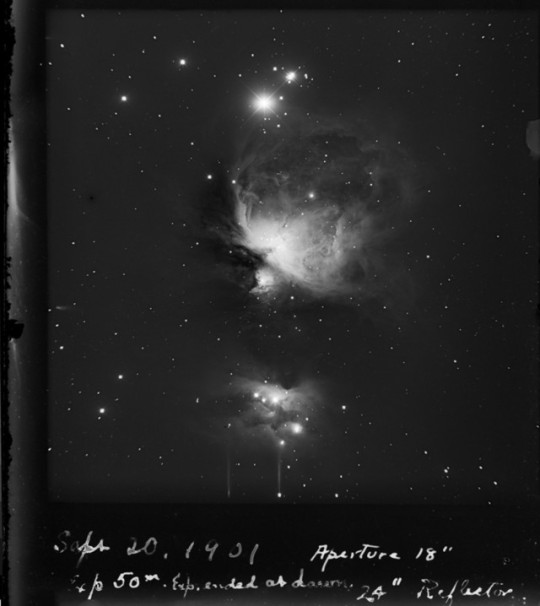Text
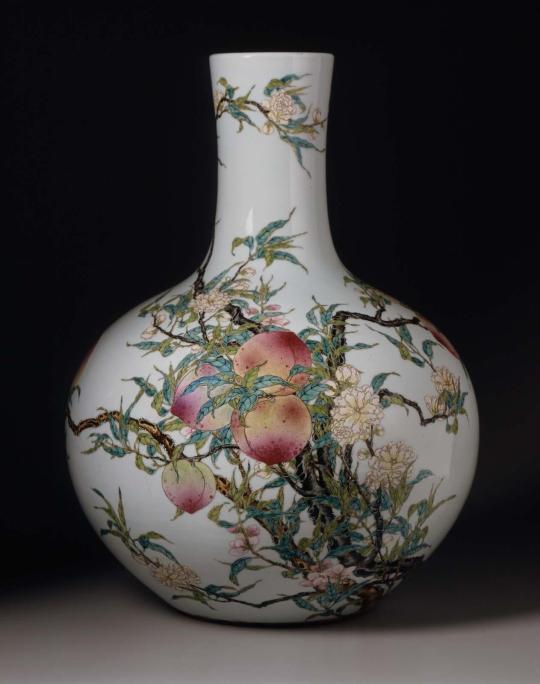
Vase with Peach Branches (Chinese, 1736–95).
Porcelain; Jingdezhen ware with overglaze enamels.
Image and text information courtesy MFA Boston.
263 notes
·
View notes
Text
Robert Lester Folsom performed at The Chapel in San Francisco last night (Sunday April 13th, 2025). Sun Child opened the show & then played with him for the rest of the night.
He heard them playing at a farmers market and asked them to come on tour with him -- they reminded him of himself at that age :')
0 notes
Text

Night of blues , Blue Night - Hsin-i Kuo , 1921.
Taiwanese , b. 1974 -
Watercolour , 56 x 113 cm.
4K notes
·
View notes
Photo
STS-125 Atlantis Solar Transit (200905120002HQ)
In this tightly cropped image, the NASA space shuttle Atlantis is seen in silhouette during solar transit, Tuesday, May 12, 2009, from Florida. This image was made before Atlantis and the crew of STS-125 had grappled the Hubble Space Telescope. Photo Credit: (NASA/Thierry Legault) Thierry made this image using a solar-filtered Takahashi 5-inch refracting telescope and a Canon 5D Mark II digital camera. Photo Credit: (NASA/Thierry Legault) You can see more of Thierry's fine work at: www.astrophoto.fr/

The Space Shuttle Atlantis seen in silhouette during solar transit, May 12, 2009.
(NASA)
22K notes
·
View notes
Text
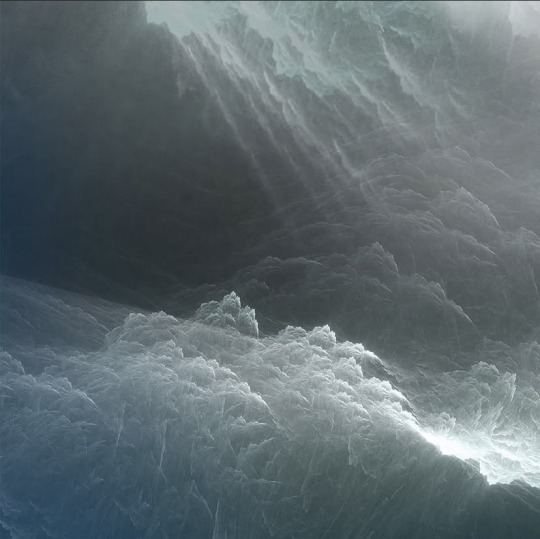
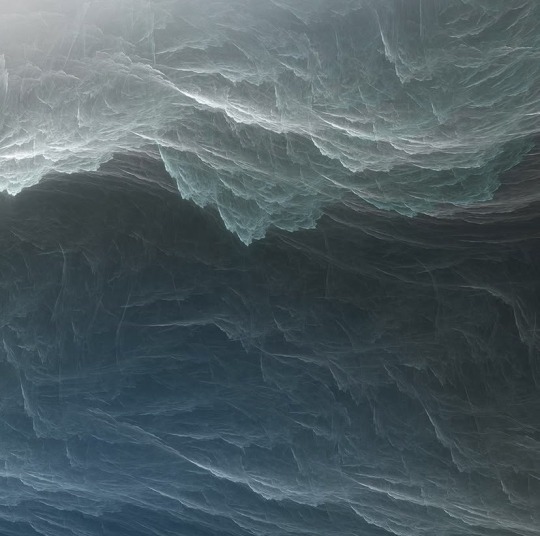
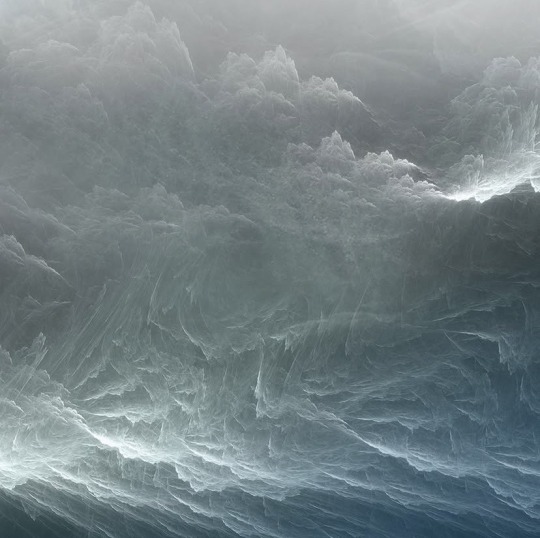
"Tsunami" (2025) by G. K. Austin II, Medium Fractal Flame, the front face mount has 1/4 acrylic glass and is mounted to aluminum with a box cleat (https://www.gkaustin.com/).
0 notes
Text

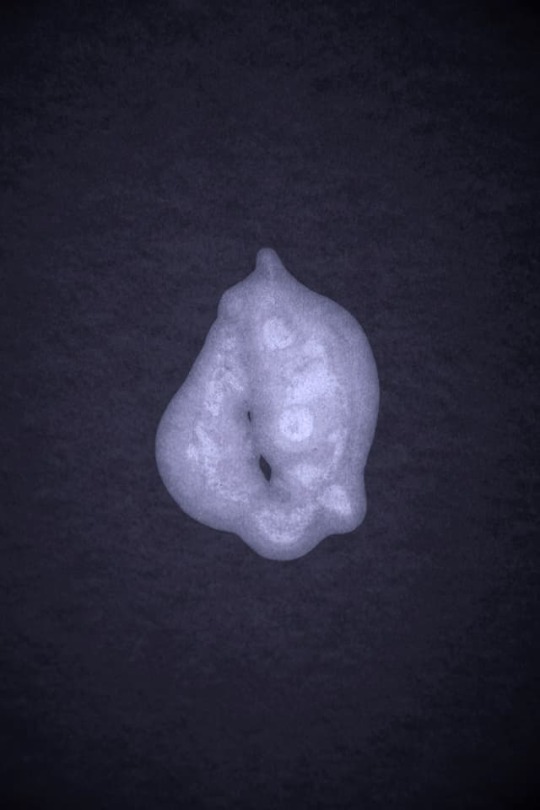
Passing Thoughts 15 (left) & Passing Thoughts 14 (right), Susan Aldworth, archival digital print, 35 x 23 cms, 2013. First shown at GV Art, London in 2013, and in Realisation at the The Fitzwilliam Museum, Cambridge in 2017.


Passing Thoughts 11 (left), Susan Aldworth, archival digital print, 42 x 28 cms, 2013.
Passing Thoughts 12 (right), Susan Aldworth, archival digital print, 35 x 23 cms, 2013.
"Something happened in the studio . . . that made me realize that I could make a different type of print whilst still printing directly from the brain slice. The result is the fifteen digital photographic prints which make up the Passing Thoughts suite. I hope that they will remain mysterious. They are unaltered photographs – authentic, strange and beautiful pictures of a human brain. They seem to capture a moment – and this we caught on camera in the studio when we were working with the brain slices. The images revealed themselves and then disappeared in seconds. They were transient and disappeared like a thought. We did not own that brain; it was lent to us. It made its mark and then it went. . . . Originally my intention was to just look at the brain as object. But the brain, in a way, turned from object to subject as we were making the work. So, they are not just anatomical works: they are about the transience of self" (Susan Aldworth's statement for the Brain on Art exhibition at the Brain Observatory, Jan-Feb 2023).
An entry from Susan Aldworth's diary (2012):
"Recently I have been thinking about the brain as matter. I was invited to observe a brain dissection by Professor David Dexter Scientific Director of the Parkinson’s UK brain Bank at Hammersmith Hospital , and, during the session, I was allowed to hold a human brain, Helen Chadwick style. Holding the brain was a moment of total connection with the brain as object. It was colder and heavier than I had expected. But it was not just object – I cradled it like a baby, protective, respectful of holding “someone” – someone very vulnerable in this disembodied state. The object momentarily became the person in my hands. The experience was seminal – would it be possible to translate the physicality of the brain into a piece of work?"
On the Brain Observatory & the Brain on Art exhibition:
"The Brain Observatory, founded in 2005 by Dr. Jacopo Annese, built its reputation as a research lab on The University of California, San Diego (UCSD)’s campus. Today, the Observatory operates as an independent institute focused on bringing the world of neuroscience to the community" (the Brain Observatory website). … "Susan Aldworth, Andrew Carnie, Annie Cattrell, Suki Chan, Pablo Garcia Lopez, and Nina Sellars are at the forefront of an international community of artists who sustain serious interest in scientific research. They often work closely with scientists and clinicians in laboratory and healthcare settings. Several of them are based in the UK, where the creative dialogue between art and bioscience has enjoyed significant funding support since the 1990s. This art-science movement continues to contribute cultural insight and empathy to the human quest for health and well-being. The exhibition is jointly curated by Dr. Jacopo Annese, President, and CEO of the Brain Observatory, and Dr. Marius Kwint, Reader in Visual Culture at the University of Portsmouth, UK" (the Brain on Art exhibition webpage).
7 notes
·
View notes
Photo
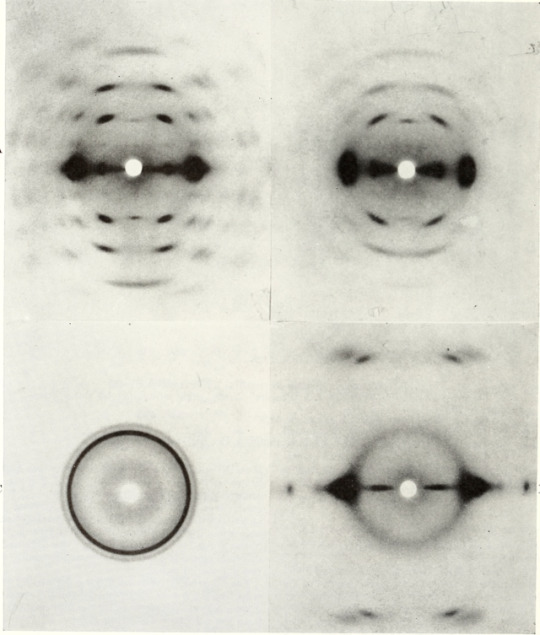
“Diffraction patterns for natural and synthetic fibers.” Encyclopedia of X-rays and gamma rays. 1963.
Internet Archive
5K notes
·
View notes
Photo
Lauren Semivan’s series ‘Observatory’ – “ghosts of previous drawings create a sense of time suspended, evoking gesture, atmosphere and memory… an access to the extraordinary, to keep a record of dreams, and to employ the unknown.”

Lauren Semivan From Observatory series
156 notes
·
View notes
Text
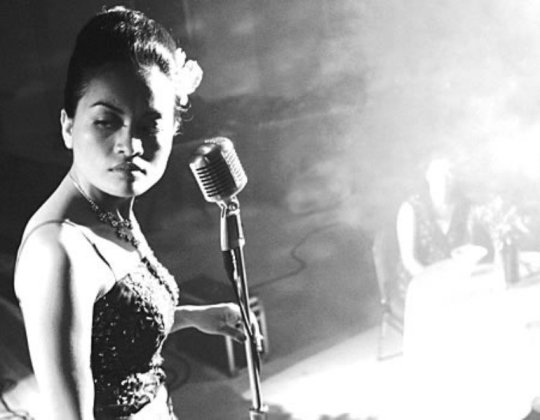
"Ros Serey Sothea: The golden-voiced Cambodian surf rocker slain by the Khmer Rouge" by Tyler Golsen (Far Out Magazine, Oct 5 2023)
Throughout the 1960s and 1970s, Cambodia had one of the most prominent and burgeoning rock scenes in the entire world. As the first wave of American rock and roll came to an end in the late 1950s, the country received its first import records of prominent figures like Elvis Presley, Chuck Berry, and Little Richard. It wouldn’t be until the escalation of the Vietnam War that pop and rock records began to be picked up on US Armed Forces radio. It was in that explosion that Ros Serey Sothea emerged as perhaps the most unique and singular talent of the genre.
Born in the Battambang Province of Cambodia, Sothea held all the same qualities that traditional Cambodian singers had. But it was her willingness to experiment that helped make her name. Teaming up with fellow forward-thinker Sinn Sisamouth, the pair recorded a number of popular ballads that secured them popularity in wider Cambodia.
The influence of American culture in Cambodia reached a peak in the late 1960s, with music being a dominant force for change. Western instruments like electric guitars, drum kits, and Farfisa organs began to filter into the country. Musicians responded by taking a harder-edged approach to the more traditional Cambodian sound. Sothea was a rare example of an artist who had a foot in each camp – her traditional ballads and film appearances made her a famous star, but her more progressive material made her an underground hero with the upstart genre of Cambodian rock.
Across her relatively short career, Sothea recorded a number of songs that verge on psychedelic rock, garage rock, and even proto-punk. At the start of the 1970s, the Khmer Republic came into political power, establishing strong relations with the West and causing the burgeoning Cambodian rock scene to flourish. However, the continuing Vietnam War limited live performances and put a strain on the country’s unity. As a civil war began to brew, the emerging Khmer Rouge sought to eliminate all Western influence, particularly with musicians.
As Pol Pot came to power in 1975, the Khmer Rouge went about transforming Cambodia from a sprawling urban constitutional republic (in name, despite characteristics that were more common of a far-right military dictatorship) to an agrarian socialist society. With support from the Chinese Communist Party, the Khmer Rouge murdered dissidents and any figures that were deemed a threat to the regime. That included many popular singers and musicians.
It is uncertain what happened to Sothea after the rise of the Khmer Rouge. As a resident of Phnom Penh, Cambodia’s capital and most populous city, it is likely that Sothea was evacuated from her home, relocated to the countryside, and forced to work as a labourer. As a prominent entertainer, there is also a strong chance that Sothea was specifically sought out and murdered by the Khmer Rouge. Different stories have Sothea dying from overwork or starvation, while others have her identity being revealed as she was forced to perform for the party’s leadership before being killed. In any case, Sothea died during the Khmer Rouge regime, with her remains and ultimate fate never being officially identified.
Although most of her master tapes were destroyed by the Khmer Rouge, vinyl records containing Sothea’s work managed to survive the Cambodian genocide. After her death, Sothea’s sister, Ros Saboeut, helped re-establish her legacy by reuniting former musicians who also survived. As the Khmer Rouge fell in 1979, the remnants of the Cambodian rock scene of the 1960s and 1970s slowly began to get pieced back together.
Eventually, some of Sothea’s heavier rock material found its way onto the 1996 compilation album Cambodian Rocks. Songs like ‘Chnam oun Dop-Pram Muy (I’m 16)’ and ‘Jam 5 Kai Thiet (Wait Five More Months)’ showed a pronounced surf rock and garage rock influence. When the bootleg album was originally released, all 22 tracks were untitled, with no information regarding the artists’ identities. Over time, however, Sothea’s name has added to her tracks thanks to the ongoing archival efforts of Cambodian researchers.
Today, Sothea remains a recognisable name in Cambodia, largely thanks to the more traditional songs that bear her name. However, it’s her work in the rock genre that continues to resonate as the country’s history continues to be rediscovered. As films like the 2015 documentary Don’t Think I’ve Forgotten attempt to reclaim the lost rock scene of the era, Ros Serey Sothea remains a vital and central pillar of the genre’s history.
"Who Killed the Golden Voice?" by E.L. Biron (Papier Huis, Aug 16 2017)
The rain kings had left the city. The Chinese laborers did not bet on the monsoons anymore, nor the mango rains. The billboards for Alain Delon cigarettes tattered in the wind, sun-faded and old.
Rock and roll was still playing in the bars; when the bombs fell nearby, the band stopped, if only to tell whether the roof would fall on their heads or if they would be spared to play another day. None of the clubs were open due to the night curfew, so the afternoon became midnight, bands playing to candlelight.
One day, all was silent. There is a peculiar feeling in the air when a city is quiet, as if the body knows something is wrong; people, together, are supposed to make noise. Phnom Penh had been under heavy bombardment, first from the Americans, and then from the incoming CPK. Quiet meant a conclusion had been reached.
There are many things that happen when cities fall; the souls and lives of thousands, hundreds of thousands, are crushed under the weight of history rolling forwards; ghosts spill from the crumbling buildings, shot through by artillery fire, roofs caved in from heavy shelling; people recognize the dearth of feeling, as if this new imposed situation is too alien to be real. Chaos settles and in the wake of the dirt and smoke, the radio waves carried a message throughout Phnom Penh: Khmer Rouge had ordered all citizens to evacuate to the countryside, so they might redistribute the city’s districts. It was a poor lie, but their trust in the authority had not been betrayed just yet, and so millions poured out on the dirt roads leading away from the cosmopolitan capital, on cyclos, on bikes, on foot.
It is said that among them was a woman, known as the Golden Voice. She would be dead soon too, a casualty of her music like so many others. The question that haunts many surrounds her as well:
Who killed Ros Serey Sothea?
Her voice is a phantom. When you hear her sing, it is high and clear, smooth like the sound of a bell on the wind, with a haunting vibrating timber like the khloy flute. It is special. It has the magnetism of something beautiful that is also imperfect. She was beautiful and her voice crystalline; she was the greatest, and the loveliest.
Her voice is so distinguishable that when the bloodshed was over, it helped identify over 250 lost films that featured it on the soundtrack. A voice followed down the hall, always around the next corner but never to be found.
Ros Serey Sothea was born on a farm and sang as she worked in the rice fields. Her family was poor, and her father left early on, so her mother let her eat flower petals and banana blossoms, and she sang as soon as she learned to speak. Her fate was clear: she was not meant to spend the rest of her life planting rice. She wanted to sing where more than the fields could hear her.
She left home at 17 with her brother, travelling to Phnom Penh, the shining pearl, the musician’s paradise. The people in the bars and Mekong Night Club paid her more attention than the rice paddies ever did and she soon found herself in the rudimentary studio of the National Radio, where the walls were made of curved plywood and there was only one microphone to share.
She sang, record after record, with Pan Ron, Houy Meas, Sos Math. Phnom Penh was riding a wave of incredible cultural buoyancy, tweaking rockabilly, garage rock, psychedelic rock into a singular and unique Cambodian product. At one point, King Norodom Sihanouk – also known affectionately as Samdech Euv, “father prince” – bequeathed her the title of “Golden Voice of the Royal Capital”. She sang about misery and loss to imported party tunes from Cuba, America, France; it is a strange combination, but beautiful in its strangeness. Love seems fun and light, but in her lyrics love is also pain, and like many who sing about love, she was not lucky in finding it.
She soon married one of the singers she met in the studio, Sos Math. They drove around in his Volkswagen, touring and playing shows until one night at the Club Lotus D’Or when she sang about their arguments and was heckled by a drunkard; she and her husband fought at the intermission, and she returned to the stage with a split lip. She, however, proved herself to be a modern woman in a modern age: she got a divorce. Sos Math, a polygamist, returned to his remaining two wives.
Serey Sothea went to live in relative obscurity with her mother in Battambang, digging in against the unrelenting press and critiques of her failed marriage, perhaps wallowing, perhaps not, until the day Sinn Sisamouth showed up at her door. He had always called her Little Sister, and ultimately convinced her to return to the National Radio and make a record with him; they were the power couple of Cambodian rock and roll, styled after the Elvises and Ella Fitzgeralds, America’s golden crooners.
youtube.com/watch?v=46Sv9seKcD0
Elsewhere, the failures of the French in Indochina became the burden of the American military, and there was a marked increase in U.S. presence in the South Pacific. The American 7th Naval Fleet anchored in the South China Sea, and its radio transmissions reached Phnom Penh; Wilson Pickett, Motown, Santana, John Fogerty. The sound remained, but the words were replaced with Khmer lyrics. “Proud Mary” became “Yorum Srolaunh Kyoum (Cry Loving Me)”. She sang ballads, sad songs about lost loves, spoiled love, hard love. Songs about longing for the full moon, the water, the night. It all seems like the flower that blooms at night, secret and lovely, or perhaps the goldenrod, which blooms once, and then folds back into itself and the soil.
The golden age was not to last, however, and this is not a story that ends well. Cambodia’s history is neither well-known nor well-understood, partly due to the worldly ignorance of those outside of it, and partly because so many were silenced. This is the first in a four part series: “Who Killed the Golden Voice?”
12 notes
·
View notes
Photo
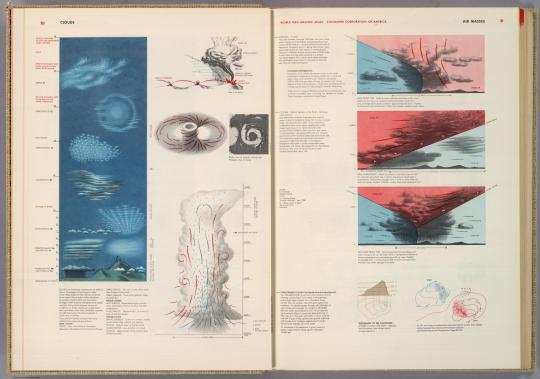
Clouds & air masses [link to higher resolution] -- cloud types and processes, storm fronts, and storm types.
World Geo-graphic Atlas, A Composite of Man's Environment. Geography, Geology, Demography, Astronomy, Climatology, Economics. Privately printed for Container Corporation of America, 1953, edited and designed by herbert bayer.
From the preface:
"This book is called "WORLD GEO-GRAPHIC ATLAS" because it includes, in addition to GEO-graphic maps, many GRAPHIC illustrations of subjects closely related to modern geography." From the Foreward: "We, in Container Corporation, believe that a company may occasionally step outside of its recognized field of operations in an effort to contribute modestly to the realms of education and good taste. Relatively few people, other than the purchasing agents of manufacturing companies, have occasion to purchase the products of Container Corporation. Most people have occasion to use and study an atlas. It is our hope that this one, quite different from any other atlas we know about, will give information and enjoyment not only to many of our customers, but also to that large number of people with whom Container Corporation unfortunately is in less close association." The atlas demonstrated the post-World War II geopolitical and economic situation. Followed by a German language edition: GOLDMANNS GROSSER WELTATLAS. Munich: Wilhelm Goldmann Verlag, 1955. The international maps of this English language atlas are from the Instituto Geografico di Agostini. Maps of the U.S. are by Rand McNally and Company. Relief shown as combined hachures, shaded relief, and hypsometric tints; bathymetry also tinted. In full color. Lavishly illustrated with drawings and graphics. Editor and designer Herbert Bayer (1900-1985) was prominent in the Bauhaus movement and personally did considerable map research for the atlas. This clear and concise volume relies upon an attractive juxtaposition of physical and political maps, text, thematic maps, illustrations, cross-sections, graphs, and diagrams. Many of the graphics are truly original yet demonstrative of important concepts. Many insets of the vicinities of urban areas.
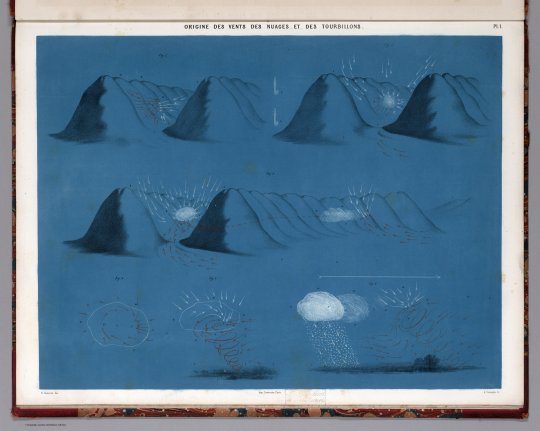
Pl. I. Origine des vents des nuages et des tourbillions [link to higher resolution] (trans. Pl. I. Origin of winds, clouds and whirlwinds) -- color chromolithographed view of the origin of winds of clouds and whirlwinds, printed in blue and white.
Source: Origine des vents des nuages et des tourbillions. N. Paulovitz del. A. Cassagne lit. Imp. Lemercier, Paris. (to accompany) Atlas meteorologique ... Par Pierre Beron. Paris. Mallet - Bachelier , Gendre Et Successeur De Bachelier. 1860.

Fig. 5. The origin of clouds, winds and tornadoes. Atlas meteorologique. 1860.
David Rumsey
1K notes
·
View notes
